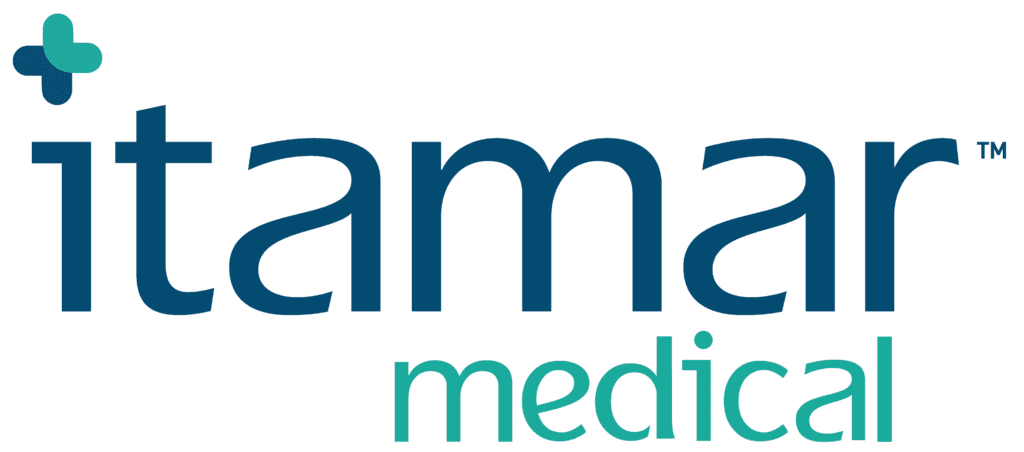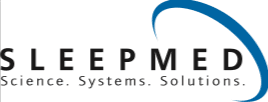Most people who have sleep-disordered breathing don’t recognize they have it. The sleep medicine industry can help address this dangerous disconnect.
Paid for by Itamar Medical
“Our mission is to help diagnose the 80% of patients who are undiagnosed,” says Shane Brown, president, United States, of medical technology company Itamar Medical. “We are driven to continue our investments and innovations to reach the millions of patients worldwide who need help.”
Brown explains technologies, strategies, and trends that he sees as key to speeding diagnosis.
Most people who have sleep apnea are not aware that they have it. How can the industry address this dangerous discrepancy?
26% of adults worldwide suffer from sleep apnea and 80% remain undiagnosed. Patient awareness and clinician education is key to reach patients walking around with sleep-disordered breathing.
I’m privileged to have worked with thousands of talented, dedicated clinicians over the years in several different specialties throughout cardiovascular medicine. Before joining Itamar®, I had no idea of the prevalence of sleep apnea. It’s our job (Itamar® and the industry at large) to assist in spreading the word.
The average patient navigating a chronic disease hears about proper nutrition. They hear about exercise. I want every patient to hear about healthy sleep as well.
How will Itamar Medical specifically help more people with sleep apnea get diagnosed and treated?
WatchPat® One has proven to be an amazing solution in the COVID-19 environment. Clinicians don’t have to worry about restricted access to their facilities. They don’t have to spend time sterilizing equipment. In effect, they have no bandwidth issues due to capital constraints. We continue to see rapid growth, month on month, for devices sold and tests conducted.
With our partners, Itamar® Medical offers customizable solutions to every clinic. These easy solutions provide diagnosis and therapy within 15 days on average. We provide instant patient insights and know the importance of speed when converting patients from a diagnosis to the appropriate therapy.
Being diagnosed with sleep apnea and starting treatment is a huge step, but ongoing management of sleep-disordered breathing is sometimes overlooked. Do you see home sleep testing evolving so that continuous monitoring becomes more a recognized part of long-term sleep management?
Sleep apnea is a serious and common sleep-breathing disorder. Recent studies have shown that 50%-80% of patients with cardiovascular disease including hypertension, stroke, atrial fibrillation, and HF have significant sleep apnea—and patients with uncontrolled sleep apnea are more likely to have worse outcomes including uncontrolled hypertension, refractory afib, and higher mortality. Enabling remote patient monitoring programs in patients with chronic disease will almost certainly be a game changer in helping clinicians to identify sleep apnea and monitor its burden on the path to better outcomes. We also believe that pulmonologists will gain the added benefit of RPM in monitoring patients with overlap sleep-apnea/COPD syndrome, a condition that can increase death sevenfold.
How does Itamar’s acquisition of Spry Health, announced in early 2021, change the game for long-term continuous management of sleep apnea?
Itamar® Medical’s goal is to expand sleep apnea diagnostics from a single-night test to continuous remote patient monitoring, and Spry is a perfect fit.
Spry provides an excellent platform for us to bring to market a continuous sleep apnea monitoring device to further support chronic disease management, particularly as it contributes to the added burden on cardiovascular disease. While finger-based monitoring yields the highest accuracy, it is currently not suitable for longer-term wear. A device that is designed for the wrist is more suitable for monitoring the continuous accumulated burden of sleep apnea and its potential impact on other diseases, such as cardiovascular conditions, due to its wearability over weeks or months.
Many people talk about the need for multidisciplinary collaboration in sleep medicine. Are there specific types of clinician collaborations that you’d like to see more of—the ones that you think would do the greatest good for patients?
There are 92M cardiovascular disease patients in the US and 50% have sleep apnea. And similar to the general sleep apnea patient population, 80% remain undiagnosed. Sleep medicine and cardiology collaboration is critical to diagnose and treat those patients.
The current care pathway for cardiology patients with sleep apnea is long and cumbersome. Based on our estimations, 50%-75% of these patients never make it to diagnosis or therapy. Untreated sleep apnea in cardiovascular patients has a 5-fold increased risk of death from cardiovascular disease. To address this issue, at Itamar® Medical we offer customizable solutions both for sleep and cardiology clinics that take patients from screening to diagnosis and therapy within 15 days on average.
Do you have any ideas for how the industry can foster multidisciplinary collaborations?
COVID and infection control restrictions made it difficult to diagnose and treat sleep apnea patients. Clinics would like to mitigate the infection risk both for their staff and patients. Remote solutions with seamless and secure data transfer within the clinics makes multidisciplinary collaboration easier and safer. Our WatchPAT® ONE, the first disposable HSAT that meets AASM guidelines, with our cloud solution, make it possible. Many clinics across the country are adding these solutions to their daily practice to help their patients as well as reduce the patient backlogs.
Itamar Medical certainly created a buzz when it launched its WatchPAT one disposable home sleep testing device, which ultimately was a prescient move as the COVID-19 pandemic made sleep professionals even more interested in disposables. Where do you see the disposable home sleep testing market headed? Do you think there will still be a place for reusable home sleep tests in the future?
A recent survey indicates approximately 27% of sleep clinics use only or mostly disposable HSAT. WatchPAT® ONE, the first disposable HSAT that meets AASM guidelines, not only helps clinics mitigate the infection risk but also streamlines the diagnosis with instant test results.
Reusable devices come with logistical limitations. However, using disposable HSAT helps for a better management of patient backlogs which drastically built up during COVID.
The same survey indicates that clinicians expect to use more HSAT post-COVID. Due to the above benefits of disposable HSAT, we believe this trend will not go away and clinics will keep adding disposable HSAT to their portfolio in the future.
Itamar Medical recently conducted a sleep clinic survey. Can you share any of the key findings with us?
Due to COVID-19 infection risks, sleep labs were forced to close, hindering access to in-lab testing. As a result, sleep clinicians relied on home-based testing solutions, which played a vital role in enabling them to continue to diagnose patients and empower the commencement of their patients’ care pathway. The survey results indicate that HSATs were considered an appropriate alternative to PSG, with the heightened awareness of the many benefits of HSAT solutions. Most clinicians believe that a shift from PSG to HSAT is here to stay after the pandemic is under control.
Approximately 67% of respondents indicated PSG usage decreased while 66% of respondents indicated HSAT usage increased during COVID. Around 27% use only or mostly disposable HSAT and ease of use was noted as the most important feature for an HSAT, followed by reliability and accuracy.
While sleep apnea effects an estimated 54 – 60 million people in the United States, roughly 80% of sufferers remain undiagnosed and untreated, largely due to the lack of awareness as to the serious nature of the disorder. The innovation in home-based testing and the shift from PSG to HSAT can improve this situation dramatically.
Photo 32938473 © Sandor Kacso – Dreamstime.com
This content is paid for by:






![CVS Wants to Streamline Sleep Apnea Care [Editor’s Message]](https://sleepreviewmag.com/wp-content/uploads/2020/01/cvs-health-new-mc-np-and-female-patient-440x264.png)